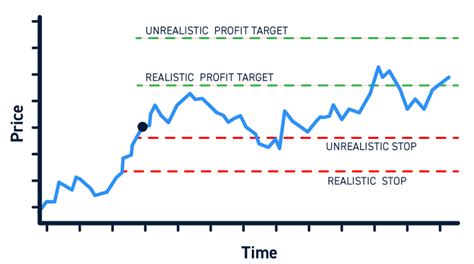Evaluating the Risk-Reward Ratio in Crypto Investments
The world of cryptocurrency has become increasingly popular in recent years, with many investors throwing their money into these digital assets. However, as with any investment, there are risks involved. One crucial factor to consider is the risk-reward ratio, which measures how much potential reward an investor can expect from a given investment compared to the amount of risk they are willing to take on.
In this article, we will explore the concept of the risk-reward ratio in crypto investments and provide guidance on how investors can evaluate their own risk tolerance before making investment decisions.
What is the Risk-Reward Ratio?
The risk-reward ratio is a simple yet effective way to assess an investment’s potential returns. It is calculated by dividing the expected reward (or profit) of an investment by its initial cost or investment amount. A higher risk-reward ratio indicates that an investor can expect greater rewards for their money, while a lower ratio suggests more risk.
Calculating the Risk-Reward Ratio
To calculate your own risk-reward ratio in cryptocurrency investments, consider the following steps:
- Define your investment goals: Determine what you want to achieve with your investment (e.g., short-term gains or long-term growth).
- Research potential assets: Look into different cryptocurrencies and their underlying technologies (e.g., blockchain, smart contracts).
- Assess risk factors: Consider the following:
* Market volatility
* Liquidity risks
* Regulatory uncertainty
* Competition from other assets
- Estimate expected rewards
: Research potential revenue streams or profit projections for your investment.
- Calculate the risk-reward ratio: Divide your estimated rewards by your initial investment amount.
Evaluating Risk-Reward Ratios in Crypto Investments
While there is no one-size-fits-all approach to evaluating the risk-reward ratio in crypto investments, here are some general guidelines:
- Low-risk investments (e.g., staking or lending): 1:100 to 1:500
- Moderate-risk investments (e.g., trading or mining): 1:50 to 1:200
- High-risk investments (e.g., speculative trading or high-growth assets)

: 1:10 to 1:50
For example, let’s consider a hypothetical investment of $10,000 in the Bitcoin (BTC) cryptocurrency. If you estimate that BTC has an expected reward of $100 per year and your initial investment amount is $10,000, your risk-reward ratio would be:
Risk-Reward Ratio = Estimated Reward / Initial Investment Amount
= $100 per year / $10,000
= 1:0.01
This means that for every dollar invested in BTC, you can expect to earn approximately $1 in rewards each year.
Mitigating Risk and Maximizing Rewards
While the risk-reward ratio is an important factor to consider when investing in cryptocurrency, there are steps you can take to mitigate risks and maximize your returns:
- Diversify your portfolio: Spread your investments across different assets to reduce exposure to any one particular asset.
- Set realistic expectations: Don’t invest more than you can afford to lose, and be prepared for market fluctuations.
- Stay informed: Continuously research and stay up-to-date on market trends and regulatory changes.
- Use stop-loss orders: Set a price at which you will sell your investment if it falls below a certain level.
Conclusion
Evaluating the risk-reward ratio is crucial when investing in cryptocurrency. By understanding your own risk tolerance and setting realistic expectations, you can make more informed decisions about how much of your money to invest in these digital assets. While there are risks involved in crypto investments, with careful planning and research, it is possible to maximize rewards and achieve long-term growth.